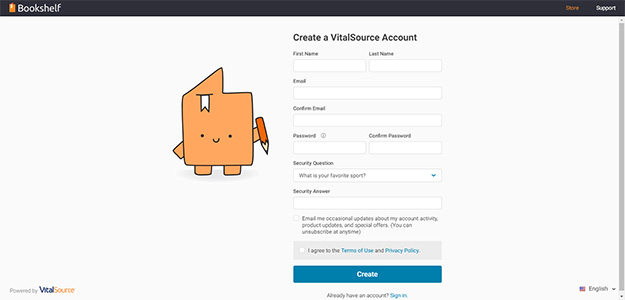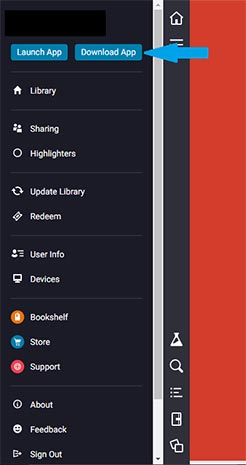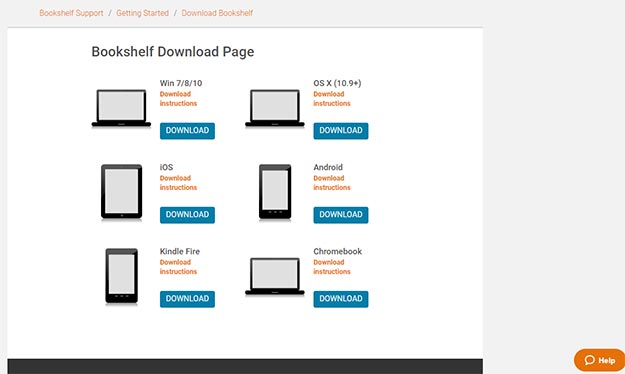Student Manual
Getting Started
You can access your course through your myAU portal. Most students bookmark their login pages so they can enter them more directly; however, if you are accessing from a different station, it is probably easiest to go through myAU.
Begin by reviewing the following information. Read it carefully, particularly if this is your first Athabasca University course in some time. Even if you are an Athabasca University veteran, remember that policies and procedures do change from time to time, and that you are responsible for keeping yourself up to date.
Next review the Moodle Orientation site, which will show you how to get started and what to do if you encounter problems with your Moodle course. Follow the directions for logging in and creating your profile, then start on your course work by following the instructions on the main course page. Remember, whatever you put in your profile can be seen by your tutor, site administrators, and other students. Your name and email address will be blocked from the view of other students, but if you put them in the text of a forum or in a message to other students, they will be known to those students.
Athabasca University Calendar
Because Athabasca University’s policies, practices, and procedures change over time, you are advised to refer to the online Athabasca University Calendar. In the event of any discrepancy between any other sources of information (including the printed version of the calendar) and the official online calendar, the online version will be binding.
The Student Code of Conduct and Right to Appeals Regulations include three policies that govern the conduct of students of Athabasca University:
- the Student Academic Misconduct Policy,
- the Non-Academic Misconduct Policy, and
- the Student Appeals Policy.
You are responsible for reading these policies carefully; they affect your studies and your role as an Athabasca University student. Links to these policies are also provided through your myAU portal; go to the myAU portal, click on Student Services, and look in the Policies & Standards section at the bottom right-hand side of the page. We encourage you to read all of the policies on this list.
Freedom of Information
and Protection of Privacy
The personal information and records collected and maintained by the University as a result of a student’s registration in this course, such as completed assignments and examinations, electronic communications, and correspondence, are subject to University policies and the privacy and access provisions of Alberta’s Freedom of Information and Protection of Privacy Act.
myAU Portal
myAU is a personalized portal to the University where you can quickly access information that is relevant to you.
myAU is a personalized portal to the University where you can quickly access information that is relevant to you. Through myAU, you can access the online components of your courses; view personal student information, such as library accounts, assignment marks, and course grades; and access forms to schedule examinations, apply for extensions, request transcripts, register for courses, and so on. Athabasca University will also communicate directly with you through myAU. Check the Message Centre on your myAU home page for both general information and for mail addressed specifically to you.
Go to the myAU login page and enter your student ID number and password where requested. If you have browser difficulties or need help, refer to myAU Help.
Academic Integrity
Students registered in Athabasca University courses are considered to be responsible scholars and are therefore expected to conform to the highest standards of academic integrity in all written assignments, including examinations.
Presenting another’s work (even a few words) as one’s own is intellectual dishonesty and can result in the rejection of the submitted work, expulsion from the course or the program, or legal action, depending on the circumstances. You must fully document the sources of any quotations, information, or ideas that you use. All direct and indirect quotes, paraphrased passages, ideas, images, and tabular and statistical information that you use from other sources, including electronic sources, must be documented using an acceptable source citation style. This includes identifying, within the text of your work, anything that is not your original work. Full bibliographic information on each source cited, including the author’s name, the title of the work, the place of publication, the publisher, and the year of publication, must be given in footnote or endnote style, or in a reference list or list of works cited at the end of your essay or assignment. Citations of online materials must include the source URL.
Further, all assignments must be original work; each assignment must be created specifically for the course for which it is submitted. The submission of assignments or parts of assignments completed for other courses is considered academic misconduct and will be subject to discipline. You may quote from your own earlier work, but any such passages must be identified and fully documented as would material from any other source.
More information on this important matter can be found in the online Athabasca University Calendar under “Legal Notes and Regulations.”
Course Contract
Most Athabasca University courses are delivered online as individualized-study courses, meaning that you have the flexibility to determine your own timelines for completing the course—up to a maximum of six months to complete zero-, one-, three-, or four-credit courses, and 12 months to complete six-credit courses. If you are unable to complete your course within the suggested study schedule, you may apply for and purchase up to three, two-month extensions. Please read the following section on Applying for Extensions, as there are important timelines. Note: Extensions are not available for all courses.
If you prefer the structure of learning in a classroom or online with other students, Athabasca University also offers grouped-study courses across Canada. Course extensions apply to individualized-study courses only. You may not extend a grouped-study course, which has a scheduled start and end date similar to semesters at a traditional university.
Applying for Extensions
If you are unable to complete your course within the course contract period, you may apply for and purchase up to three, two-month extensions. Note that an extension request form must be received by the Office of the Registrar a minimum of one month before your course contract end date. Requests for second and third extensions must be received by the Office of the Registrar a minimum of one month before the expiry of the previous extension. Extension request forms are available through myAU. Consult the online Athabasca University Calendar for more information on obtaining extensions.
Online Materials
The Course Website
Athabasca University undergraduate courses are delivered through Moodle, a learning management system that supports the course, gives you access to the materials and resources needed to complete it, and allows you to submit assignments and communicate with your tutor and, in some courses, with other students. The features used, and the way they are used, vary from course to course depending on the course author’s preferences and on pedagogical and subject matter considerations; however, once you become familiar with Moodle, you will find it easy and intuitive to migrate from course to course. If you are new to Athabasca University online courses, or if you come across a feature you are unfamiliar with, the Moodle Orientation site will provide most of the answers you need.
Digital Reading Room
The Digital Reading Room (DRR) is an electronic version of a library reserve system, or a virtual reading room. It is included in most, but not all, courses and may contain most of the required readings for the course. Additional required readings may be located within the online course materials. The DRR may also link to websites that are required in the course or are otherwise useful to learners.
Forms
Examination Request Forms, forms to request extensions, and other forms that you will need are available online through your myAU portal.
eText
If your course uses an eText, this section will be of interest to you.
An eText is a digital version of a textbook. eTexts give you instant access to content wherever you are, whenever you want it; they have a powerful search feature and allow highlighting of text and note taking that can be synced between computers/devices.
It is strongly recommended that you download your eText.
Access to your eText is provided through VitalSource Technologies. They provide a number of options for you to read your eText both online and offline:
Bookshelf® Online allows you to read your eText in a browser while connected to the internet.
Bookshelf® Downloadable (for PC or Mac) allows you to read your eText offline.
Bookshelf® Mobile iOS (for iPad, iPhone, and iPod Touch) and Bookshelf® Mobile Android (for Android devices and Kindle Fire) allow you to read your eText offline.
See eText Technical Requirements for more information about supported devices and versions.
Textbook Purchase Option
A print version of the eText can sometimes be purchased from the publisher through a direct-to-student link provided on the course website; you can also acquire the textbook on your own if you wish.
Using Your eText Online
Before you access your eText, you may might need to disable your pop-up blocker. If you need help doing that, follow these instructions.
We recommend that you start with Bookshelf® Online to become familiar with the Bookshelf® features that are common to all applications. Online eTexts offer many tools to enhance your learning experience. For online access, click the eText link on your course home page.
For instructions on how to print pages, search, cite passages, manage notes and highlights, and use other Bookshelf® Online features, go to https://support.vitalsource.com and click on your product icon.
You will also find a wide range of short video tutorials on the AU/VitalSource Bookshelf tutorials page in the Bookshelf® Online section. If you wish to view a text version of the instructions covered in the video, click Transcript below the video.
Accessing Your eText Offline
Once you are comfortable with using your eText online, we strongly recommend that you also download it so you can read it offline (without being connected to the internet), and so that you continue to have access to it after you have finished your course.
You can download your eText onto a maximum of two computers and two mobile devices.
To download and read your eText offline, you must do the following:
- Create a VitalSource Bookshelf® account
- Download the appropriate VitalSource Bookshelf® App: Bookshelf® Downloadable (PC or Mac) or Bookshelf® Mobile (iOS or Android)
- Download your eText.
Creating a VitalSource Bookshelf® Account
- Click the eText link on your course home page to open the online version.
- Enter your email address when prompted.
- Enter the required information, and click Create.
- If you are on a mobile device, you will be prompted to download the Bookshelf® Online app. See below to install the app on a PC or Mac.
- Once you have created an account, Bookshelf will open the book you are trying to access for your course. To view any other books that you have access to, simply click on the Library button in the top left corner.
If you want to have your highlights and notes synced between the online and offline versions of your eText, you will need to enter the same email address as the one you entered on your AU registration form.
Keep track of your password; you will need it to access your Bookshelf (we suggest that this be different from your AU password).
Note: If you have already created a VitalSource Bookshelf account, click Sign in and enter your email address and password.

Downloading the VitalSource Bookshelf® App
- Click the Main Menu button in the top left of the page to open the side menu.

- Click Download App.

- Select the correct version for your device from the menu provided, and install the program.

Downloading Your eText
You’re almost finished! Once installed, the VitalSource Bookshelf icon will appear on your computer desktop or your device’s home screen.
- Click (tap) the icon to open it.

- If prompted, sign in with the email and password you used to create your VitalSource Bookshelf account.
- Your highlights and notes are automatically synced between machines if you have installed Bookshelf® to more than one computer or device.
- Depending on the computer or device you are using, you may see a message like the one below. Click Download. If you do not see this message, click/tap All Titles and double click/tap on a title to download it.

Note: You must be connected to the internet to download your eText. Once you have downloaded it, you will be able to read your eText offline.
Using your eText offline
While similar to Bookshelf® Online, using features such as printing, citing passages, and taking notes when working with your eText offline will vary depending on whether you are using a computer or a handheld device. For platform specific instructions, go to https://support.vitalsource.com and click/tap on your product icon.
You will also find a list of tutorials for each option on the Athabasca University/Vitalsource Bookshelf tutorials page. If you wish to view a text version of the instructions covered in the video, click Transcript below the video.
Managing Machine Authorizations
You can keep your eText on any computer or device to which you have downloaded it from six years to perpetuity, depending on the publisher. A record of these computers and devices is stored with your account information. Follow these instructions if you want to de-authorize a computer or device so that you can download Bookshelf® to a different machine.
Privacy
When accessing or downloading this eText, your student number and email address will be sent to the vendor. No other personal information will be divulged.
Online access to eTexts is provided through single sign on in Moodle course sites. When the eText is activated by clicking on its link, anonymized student information authenticates the user and activates the license.
To download the eText, users are required to set up an account with VitalSource. You will be asked to provide your name and an email address at that time. You will be offered access to the download once you have activated the eText link in Moodle.
Note that the vendor’s website is accessible in the United States and is therefore subject to the U.S. Patriot Act. Any activity, including highlighting, searches, and note-taking that you do can be accessed by U.S. authorities under that act.
Help
If you have any questions or difficulties accessing or downloading your eText, please connect with eText Help.
Materials Management
If a package is listed and you have not received it by your course start date, or if the package arrives incomplete, email Materials Management at Athabasca University at cmat@athabascau.ca. If you live in Canada or the United States, you may phone (800) 788-9041.
Course Tutor or Academic Expert
An important person in your Athabasca University course is the course tutor or academic expert. The name, telephone number, and email address for your tutor or academic expert for this course will be provided in an e-letter.
Your tutor or academic expert has excellent academic qualifications and is skilled at and committed to helping you learn at a distance. In addition to being available to answer your questions about course content or how to approach assignments, she or he can direct you to the correct person or department to help you with other problems that might be hindering your progress in your course or program. In addition, your tutor or academic expert will be responsible for marking your assignments.
You are advised to contact your tutor or academic expert soon after your start date, then get into the habit of emailing or phoning at regular intervals, such as when you finish a unit. Contact your tutor or academic expert whenever you run into any special problem. Students who keep in regular contact are more likely to be successful in their courses than those who do not, so do keep in touch.
Please let your tutor or academic expert know whether you prefer regular communication by phone or through email, or a combination of both.
Assignment Drop Box
You are required to use the Assignment Drop Box to submit your assignments to your tutor or academic expert. Unlike email, the Assignment Drop Box provides an accurate record of submissions and return dates, and removes the risk of having emails deposited into quarantined files and/or discarded mail folders. The drop box method is another way of ensuring that you receive feedback from your tutor or academic expert in a timely manner. If you have any difficulty using this technology, please contact Athabasca University’s IT Help Desk.
Your tutor or academic expert has seven to eight business days to respond from the date your assignment was uploaded, so don’t expect an immediate response. Once your assignment has been graded, and if you have any questions about the assignment, the mark, or any comments, please contact your tutor or academic expert and ask for additional feedback.
Electronic Letters
Most letters issued by Athabasca University are distributed using the e-letter format. You may still request print letters, but you will be charged a $10, one-time service fee. If you have chosen the AU e-letter delivery method for your letters, you will need to access this letter online from your myAU student portal. E-letters do not arrive by email. It is your responsibility to check your e-letters on a regular basis. Read through the e-letter information provided on your myAU portal to be certain that you understand how to access the e-letter from your tutor or academic expert.
Regardless of the method you have chosen to receive this letter, if you do not receive it before your contract start date, be sure to contact Learning Services Tutorial by phoning (800) 788-9041, (ext. 6196) or (780) 675-6196 as soon as possible. You may also contact Learning Services Tutorial by sending an email message to tutserv@athabascau.ca.
Course Coordinator
The course coordinator (or professor) is usually the senior academic staff member in charge of the course. The coordinator works directly with tutors on both academic and administrative matters. If you have difficulties that cannot be resolved with your tutor’s help, you may wish to contact the coordinator directly. The coordinator is also the person to contact regarding credit records. In addition, the coordinator can provide general information about program planning and curriculum development.
Services to Students
 Athabasca University offers a wide range of services to its students. The Athabasca University Information Centre, at (800) 788-9041, will help you to find the answer to most course-related questions. The Centre is staffed Monday through Friday from 8:00 a.m. to 5:00 p.m. Mountain Time. Students can leave voice-mail messages outside these hours, or send email inquiries through the AskAU website for an immediate response.
Athabasca University offers a wide range of services to its students. The Athabasca University Information Centre, at (800) 788-9041, will help you to find the answer to most course-related questions. The Centre is staffed Monday through Friday from 8:00 a.m. to 5:00 p.m. Mountain Time. Students can leave voice-mail messages outside these hours, or send email inquiries through the AskAU website for an immediate response.
Advisors are available to help students plan their programs and select appropriate courses. You can reach an advisor in several ways: by phoning 1(800) 788-9041 and asking to speak with an advisor; by visiting Athabasca University in Athabasca, Edmonton, or Calgary; or by emailing advising@athabascau.ca.
At Athabasca University locations in Athabasca, Edmonton, or Calgary, students can write examinations; order materials from the Library; and take care of various administrative matters, such as course registration and arrangements for extensions. In addition, information on student awards and financial aid can be obtained from all three locations. If you need assistance in any of these areas, feel free to call a student advisor. Consult the current edition of the Athabasca University Calendar for more information on services to students, or direct your query to the AskAU website.
Support Services brings together Athabasca University’s numerous study-related resources so that AU students in all disciplines can benefit from them.
If you are a student of Indigenous ancestry (Aboriginal, First Nations, Indian, Inuit, Native, Métis), or a non-Indigenous student who is interested in identifying culturally appropriate services designed for Aboriginal students, or counselling that is sensitive to the challenges Aboriginal students face, please contact the Centre for World Indigenous Knowledge and Research, by telephone at (800) 788-9041, ext. 2064, or send an email to indigenous@athabascau.ca.
Write Site
The Athabasca University Write Site is designed to assist students with formal, essay writing assignments. You can submit an assignment to the Write Site to receive feedback about the writing component—organization, mechanics, grammar, and style—of an essay assignment before you submit it to your tutor for marking.
Procedures for Applying for
and Writing Examinations
Before you write any examination, you should have submitted all pertinent course assignments and received feedback from your tutor. Although you are not required to seek permission to apply for an examination, you are advised to consult your tutor about your readiness to write it and about exam-writing strategies. Your tutor can also provide information about the examination format and about study strategies. To request either a mid-term examination or a final examination, follow the steps in Request Deadlines (below).
When to Write
Because tutor support is discontinued on the course contract end date, all of your course work, including assignments, quizzes, and examinations (except supplemental examinations) must be completed by your course contract end date.
Request Deadlines
Using an Invigilator
If you are requesting to write your examination using an invigilator who is not an AU-approved invigilator, your Examination Request Form must be received 60 calendar days before your requested write date.
If you live in Canada or the United States and are using the services of an AU-approved invigilator, your Examination Request Form must be received 10 calendar days before your preferred write date.
If you live outside Canada or the United States and are requesting an examination to be written at an established AU-approved invigilation centre, your Examination Request Form must be received 30 calendar days before your requested write date.
These dates apply to both online and print examinations. You will be notified when you apply for your exam whether it will be written online or in print format. Review the Examinations and Grades and Examination Centres sections of the Athabasca University Calendar, and Exam Request Deadlines
Note: To minimize the time required to process your exam request, be sure that you provide all of the information requested on the form.
- Before you submit your Examination Request Form, please arrange and confirm with your invigilator the date, time, and location of where you will be writing your exam.
- Complete and submit the online Examination Request Form: login to myAU and select Request Exam from the left column under the Courses section.
- Confirm that your invigilator has received the examination package before you arrive to write your examination. Take picture identification, either government-issued ID or AU photo ID, and your student number with you when you go to the examination site.
Writing at an Athabasca University Examination Centre
If you are requesting to write your examination at one of Athabasca University’s exam locations in Athabasca, Calgary, or Edmonton, your examination request must be received a minimum of 10 calendar days before your requested write date. This date applies to both online and print examinations. You will be notified when you apply for your exam whether it will be written online or in print format.
- Login to myAU and select Request Exam from the left column under the Courses section.
- If you are writing your exam in Athabasca, Edmonton, or Calgary, you will receive immediate confirmation by email of the details of your exam (course name/number, online/print, exam, location to write, and date/time to write). You will receive a second email two days before your exam write date that will remind you of your date and time.
Supplemental Examinations
If you are not satisfied with your initial examination mark, you may request and write one supplemental examination for each midterm or final exam required in your course (supplemental examinations do not apply to assignments, quizzes, or challenge courses). The higher of the two marks will be used in calculating your final course grade. A supplemental exam may be requested only once. If you fail to write it, you may not request the exam again.
In order to request a supplemental examination, you must complete and submit the Examination Request Form to the Office of the Registrar so that the form will arrive no later than 90 calendar days after the date of writing the initial examination. The supplemental exam must be written no later than 30 days after submitting the Examination Request Form. Please review the regulations in Supplemental Examinations section of the online Calendar.
Appeals
Appeals to examination or assignment marks should be initially discussed with your tutor or instructor. For the correct procedure, review the Student Appeals Policy in the Athabasca University Calendar.
Library Services
The Athabasca University Library has a wealth of information available on its website, and a substantial collection of online, print, and media resources. Library resources are available to Athabasca University students, faculty, and staff for reference and research purposes in support of Athabasca University courses and programs. The Library’s online collections are available to be searched remotely.
Requests for library materials or services can be made, by email, phone, fax, or mail, 24 hours a day (contact information is provided below). Requests for course materials such as DVDs or other reserved material can be made via the Library’s online request form. Responses to most requests are handled within 24 hours, or by the next business day. Borrowed materials are normally mailed to the student’s home address, along with a return-mail card.
Borrowed materials are normally mailed to the student’s home address, along with a return-mail card.
Core Services to Students
Students who are registered in AU courses may
- borrow library materials and search the Library’s online catalogue (AUCAT)
- access resources through the Library’s website, including full-text journal databases, e-books, and streaming audio and video materials
- receive library instruction and research assistance from Library staff
- request interlibrary loan services for journal articles and book chapters
Supplementary Materials
University courses often suggest that students investigate material beyond the content of the course materials package. Some Athabasca University study guides list Supplementary Materials, including books, journal articles, or media materials, which students might find useful when completing assignments and course projects. The supplementary materials referenced in your course materials package are usually available from the Athabasca University Library or your local library. Contact the Athabasca University Library to request these materials.
Library Information Portal
Through the Library’s Information Portal, members of the AU community—including students, faculty, and staff—have access to a considerable number of online resources. These resources include a significant number of online journal databases, many full-text journals, a growing number of electronic books (e-books), online media resources, and selected websites.
The Find Resources site provides access to online dictionaries, encyclopedias, atlases, etc., which can be used to find background information for assignments and general information. The Get Help site provides access to tutorials related to the research process, referencing sources, using the internet, and writing.
The Digital Reading Room (DRR) provides access to course-specific required resources.
The Library website also provides access to selected library catalogues from Canadian public and academic libraries.
Interlibrary Requests
The Athabasca University Library will attempt to obtain photocopies of journal articles and book chapters if you provide the Library staff with a complete bibliographic citation (author, title of article, name of journal, volume and issue number, year of publication, and page numbers) for the requested item. You are not required to return these items to us. Allow sufficient time for the material to be ordered and received. More information on this service is available on the Interlibrary Loans page.
Contacts
Library website: http://library.athabascau.ca
Email: library@athabascau.ca
Phone numbers:
Local: (780) 675-6254
From Canada/US: (800) 788-9041, ext. 6254
From Other Countries: 011 (780) 675-6254
From Calgary: (403) 263-6465, ext. 6254
From Edmonton: (780) 421-8700, ext. 6254
Mailing address:
Library Information Desk
Athabasca University
1 University Drive
Athabasca, AB Canada T9S 3A3
Canada
Fax: (780) 675-6477
Transcripts
You can request an official transcript by completing and submitting an online Transcript Request Form, available through your myAU portal. Paper request forms may also be used; complete and deliver these to the Office of the Registrar by mail or in person. Only the student whose transcript is being issued may make the request. No partial transcripts will be issued; the student’s entire record will be shown.
Most institutions and agencies require that official transcripts be sent directly from Athabasca University. There is no charge to request a transcript from Athabasca University. Consult the current edition of the Athabasca University Calendar for further information.
Credit Transferability
If you wish to transfer credit to another institution, contact the Office of the Registrar at Athabasca University. Remember, though, that transfer of credit is determined by the receiving institution. If you plan to transfer credits from an AU course to another institution, we suggest you get an agreement, in writing, from that institution. This agreement is typically called a Letter of Permission.
Updated December 21st, 2022


